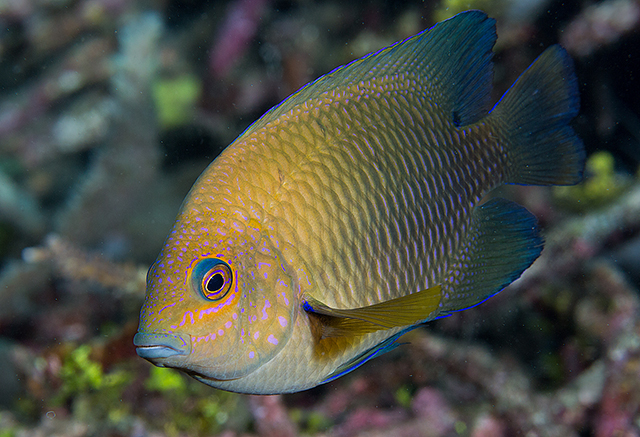| Pomacentridae (Damselfishes), subfamily: Pomacentrinae |
| 18 cm TL (male/unsexed) |
|
reef-associated; marine; depth range 1 - 20 m, non-migratory |
| Western Pacific: Thailand (Phuket), China, Philippines, Indonesia, New Guinea, Timor Sea (Ashmore Reef), Western Australia, Great Barrier Reef, New Britain and Solomon Islands. |
|
Dorsal spines (total): 13-13; Dorsal soft rays (total): 14-15; Anal spines: 2-2; Anal soft rays: 14-15. Description: Overall brown, shading darker posteriorly (Ref. 90102). Juveniles are yellow-orange postero-ventrally and brown antero-dorsally with numerous blue line and spots on the face and on the back (Ref. 1602). Body depth 1.8-2.0 in SL (Ref. 90102). |
| Adults occur in protected lagoon and coastal reefs around branching corals (Ref. 9710), usually with lots of algae on coral bases on the substrate (Ref. 48636). Feed on algae (Ref. 1602). Large species, to at least 18 cm (Ref. 48636). Oviparous, distinct pairing during breeding (Ref. 205). Eggs are demersal and adhere to the substrate (Ref. 205). Males guard and aerate the eggs (Ref. 205). Diurnal species (Ref. 113699). |
|
Least Concern (LC); Date assessed: 23 September 2021 Ref. (130435)
|
| harmless |
Source and more info: www.fishbase.org. For personal, classroom, and other internal use only. Not for publication.
